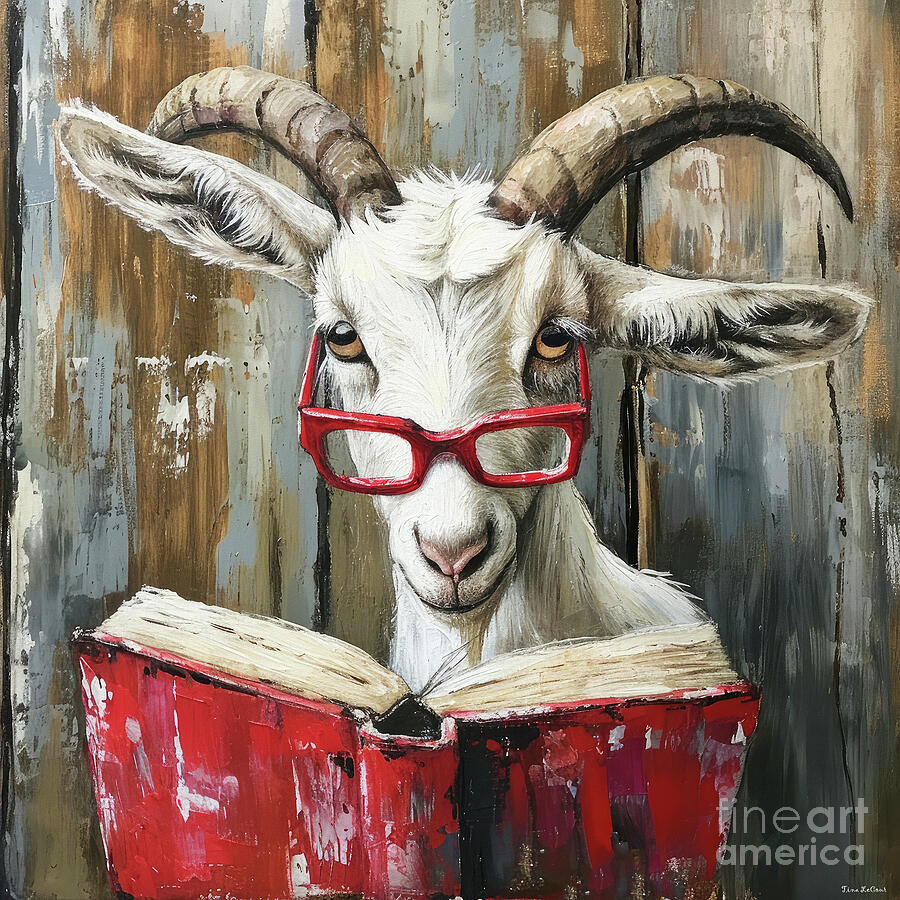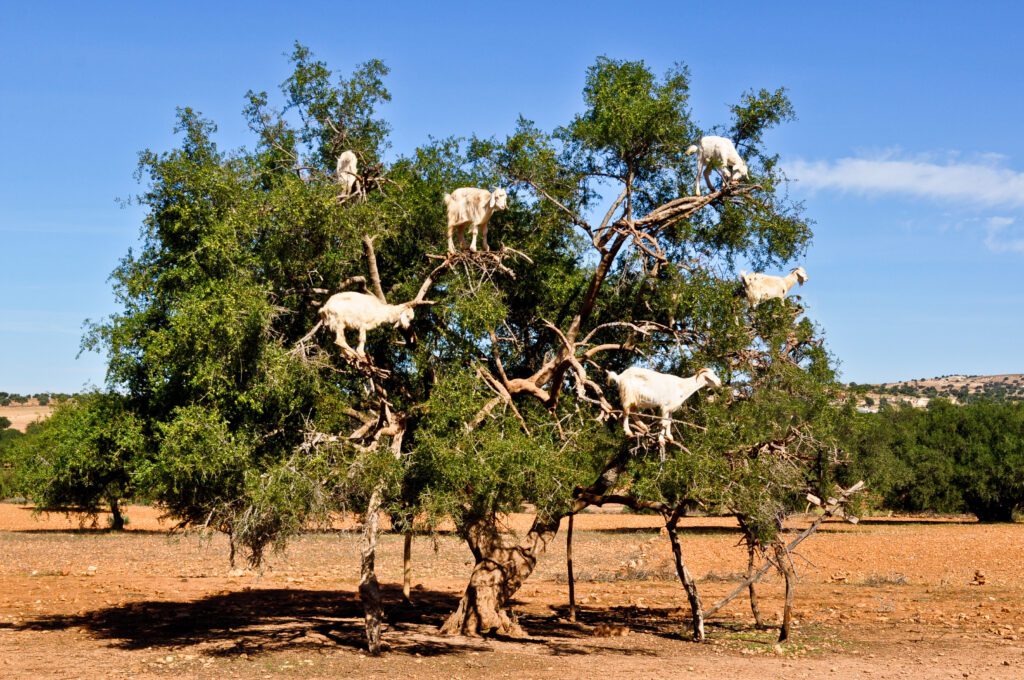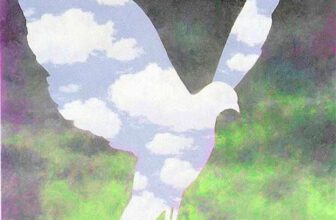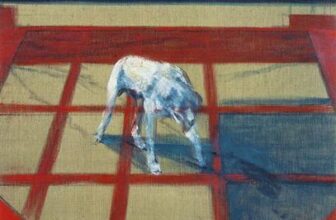
How Do Goats climb in Top of Trees
When people think of goats, they often picture these sturdy creatures grazing on mountain slopes or prancing around farmyards. However, if you’ve ever come across images or videos of goats perched atop trees, you might find yourself doing a double take. How do goats—creatures known more for their nimble footing on rocky terrain—manage to get on top of trees? The answer lies in their unique physical traits, evolutionary adaptability, and the environment they inhabit. Let’s explore the fascinating world of tree-climbing goats.
The Phenomenon of Tree-Climbing Goats

Goats perched in trees might sound like the stuff of folklore, but it’s a real and fascinating phenomenon. These arboreal goats are most famously associated with Morocco, where they are often seen climbing argan trees in search of food. While tree-climbing isn’t a universal trait among all goat species, certain factors make this behavior not only possible but also advantageous.
Why Do Goats Climb Trees?
At its core, tree-climbing in goats is motivated by necessity and opportunity:
- Food Sources: In arid regions like Morocco, vegetation on the ground can be sparse. Argan trees provide a rich source of sustenance for goats, as their fruits and leaves are highly nutritious. These trees bear small, olive-like fruits with a fleshy pulp that goats find irresistible.
- Adaptation to Environment: Goats are incredibly adaptable animals. In harsh environments where food is scarce, they’ve evolved behaviors that maximize their survival chances. Climbing trees to reach otherwise inaccessible food is a prime example of this adaptability.
- Competition Reduction: By climbing trees, goats can access a food source that other grazing animals might not reach, reducing competition for resources on the ground.
Physical Traits That Make Tree-Climbing Possible
Goats are natural climbers, thanks to a combination of anatomical and behavioral traits that allow them to scale steep cliffs and rocky outcrops. These same traits also enable them to navigate the branches of trees with remarkable ease.
1. Hooves Designed for Climbing
Goat hooves are a marvel of nature. Unlike many other animals, goats have split hooves with a soft, rubbery inner pad and a hard outer edge. This design provides:
- Traction: The rubbery pads grip surfaces, while the hard edges dig into small crevices, providing stability on uneven terrain or narrow branches.
- Balance: The split nature of their hooves allows for better weight distribution, helping goats maintain balance on precarious surfaces.
2. Strong, Agile Legs
Goats possess powerful leg muscles that enable them to jump significant heights and distances. This strength, combined with their flexibility, allows them to leap onto tree branches that might seem inaccessible to less nimble animals.
3. Incredible Balance
One of the most striking aspects of goat physiology is their exceptional sense of balance. With a low center of gravity and a natural instinct for stabilization, goats can maneuver along narrow ledges or swaying branches without falling.
4. Curiosity and Determination
Goats are highly curious animals, constantly exploring their surroundings. This innate curiosity drives them to investigate trees and other structures, often leading them to discover new feeding opportunities.
The Role of Argan Trees in Morocco
In Morocco, argan trees play a pivotal role in the tree-climbing behavior of goats. These trees, native to the semi-desert regions of North Africa, are well-suited to the arid climate and provide a valuable food source for both goats and humans.
Argan Fruits: A Goat’s Delight
The argan tree produces fruits that are rich in oils and nutrients. Goats are particularly attracted to the fleshy pulp surrounding the seeds, which they consume with gusto. While feeding, goats often swallow the hard seeds whole, which later pass through their digestive systems.
Environmental Impact
The interaction between goats and argan trees has a unique ecological aspect. When goats consume argan fruits and excrete the seeds, they contribute to the natural dispersal of argan seeds. This process aids in the propagation of these trees, although excessive grazing and climbing can sometimes damage the trees’ branches.
Other Examples of Tree-Climbing Goats
While Moroccan goats climbing argan trees are the most famous example, tree-climbing behavior isn’t exclusive to this region. In other parts of the world, goats have been observed climbing trees for various reasons:
- Spain: Wild goats in mountainous regions of Spain have been seen scaling trees to access food or escape predators.
- Ethiopia: Goats in Ethiopia are known to climb trees to forage for leaves and fruits in areas where ground vegetation is sparse.
Challenges and Risks of Tree Climbing
Although goats are adept climbers, tree climbing isn’t without its risks. Some of the challenges they face include:
- Falling: Despite their balance and agility, goats can occasionally misstep and fall, especially if branches are weak or slippery.
- Injury: Climbing trees can lead to injuries from falls or sharp branches.
- Environmental Damage: Excessive climbing can harm trees, breaking branches and hindering growth.
To mitigate these risks, herders in regions like Morocco often monitor their goats closely and take steps to protect both the animals and the trees.
Cultural and Economic Significance
Tree-climbing goats are not just an ecological curiosity; they also hold cultural and economic importance in regions where this behavior is common.
Tourism
In Morocco, the sight of goats perched in argan trees has become a popular attraction for tourists. Visitors flock to witness this unique phenomenon, boosting local tourism and providing income for communities.
Argan Oil Production
The relationship between goats and argan trees extends to the production of argan oil, a valuable commodity used in cosmetics and cooking. Traditionally, seeds excreted by goats were collected for oil extraction, though modern methods now bypass this process. Nevertheless, goats remain intertwined with the cultural and economic significance of argan oil production.
The sight of goats atop trees is an evidence to their incredible adaptability and resourcefulness. Driven by the need for sustenance, these nimble creatures have turned tree climbing into a survival strategy, showcasing the remarkable interplay between animals and their environments.
Image fineartamerica




